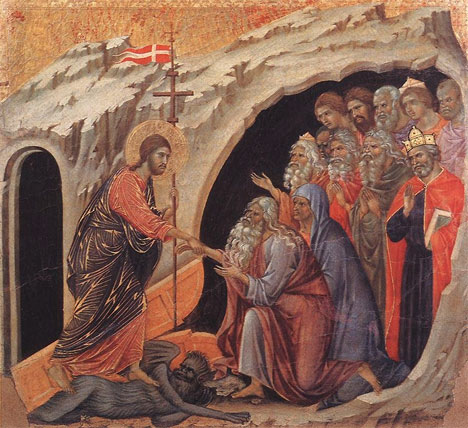Seed, Flesh and Skin
Members, here’s a ripe new chapter from God’s Kitchen. The book should be available some time in November.
Members, here’s a ripe new chapter from God’s Kitchen. The book should be available some time in November.
“To have a God-given internal moral compass is to have God Himself.”
Maturation is the process of making God’s “external law” into our internal law, our operating, animating principle. This has huge implications for sanctification, but it also explains a lot of what is going on in the Bible’s symbolism and architecture.
[This post has been refined and included in Sweet Counsel: Essays to Brighten the Eyes.]
Continue reading
“What we have received from Jesus is not a collection of ‘merits,’ but rather His maturity.”
James B. Jordan writes:
The problem with the “covenant of works” notion lies in the fact that it is linked up with merit theology. There is no merit theology in the Bible. Merit theology is a hangover of medieval Roman Catholicism.
 Part 1 here.
Part 1 here.
We’ve covered the first “Covenant cycle” in Numbers, which in theory should set the pattern (fractally) for the remainder of the book. Here’s my go at the second cycle, which (again, in theory, if my suspicions are correct), should be an “exposition” of the second part of the first cycle, which concerned the “military” arrangement of the tribes around the Tent of Meeting (Delegation). So, even though this cycle works through all seven steps, each step should reflect an “Exodus/Hierarchy” or Delegation theme. Each step thus has two literary “spatial coordinates,” an X and a Y. Each step must thus employ a symbol that pertains to two different Covenant steps, or describes the relationship between them.

“For just as Jonah was three days and three nights in the belly of the great fish, so will the Son of [Adam] be three days and three nights in the heart of the [Land].”
(Matthew 12:40)
There was some to and fro recently between Doug Wilson and Andrew Perriman on the use of Greek terms for the grave and hell used by the New Testament writers. [1] Each makes some very good points (I lean more towards Perriman), concerning “what lies beneath.” When Jesus speaks of a “divided hell,” should we be overly concerned about Greek mythology? It seems to me that those who focus on the references to pagan literature in the Bible fail to see the biblical sources of many things, even if these biblical things pick up Greek names along the way.
However, neither Wilson nor Perriman really deals with the architecture of God’s work in the world, which is what actually lies beneath. As with Shakespeare, an understanding of God’s “global theatre” enlightens us concerning the shape of His stories.
“You are beautiful as Tirzah, my love, lovely as Jerusalem, awesome as an army with banners.” (Songs 6:4)
An online friend recently questioned the repetition found in Numbers 7. The offerings of each tribe are identical, yet each is listed in full. Surely, this was a waste of expensive parchment? Architecture is important to God, no less literary architecture, and it seems to me that the “fullness” of the Offertory in chapter 7 is the result—or the liturgical response, to the military “forming” of Israel in chapter 2.
And every pot in Jerusalem and Judah shall be holy to the Lord of hosts, so that all who sacrifice may come and take of them and boil the meat of the sacrifice in them. (Zechariah 14:21)
Working on a post about the use of seals in Revelation, I was looking through the uses of the word “seal” throughout the Bible. Daniel 9:24, a very famous verse, showed up, and its structure struck me as worth some analysis. If structure is indeed part of the means of the Author’s communication, it is not an optional extra.
Continue reading
“Now therefore fear the Lord (T)
and serve him in sincerity and in faithfulness. (H)
Put away the gods that your fathers served (E)
beyond the River and in Egypt, (O)
and serve the Lord.” (S)
Joshua 24:14
Israel famously wandered in the wilderness for forty years. They were tested, offered as a sacrifice and refined with the holy fire of the Law of Moses. This “threshing” process appears at the centre of the Bible Matrix. It is pictured as the time of harvest (Pentecost – the giving of the Law), and as the burning eyes of the Lampstand watching over Israel (sun, moon and five visible planets). In the Covenant pattern it is the “Ethics,” the bit where God lays out the rules for success. Threshing is also a biblical euphemism for sexual relations. At this point, under the Lawful eyes of God, Israel is either shown to be a faithful bride or an adulteress. Is the fire of her desire true or “strange” (foreign). We can see this pattern in James 1:15. It is a sick parody of the Covenant process because it begins with a “false word.”
[This post has been refined and included in Sweet Counsel: Essays to Brighten the Eyes.]
Continue reading
“These are the generations of the heavens and the earth…” Genesis 2:4
The word “generations” is toledot. Some scholars believe this indicates earlier sources for the texts of Genesis, ancestral documents that were collated and assembled. But this view reflects modern distrust in the deliberate, careful process of revelation throughout Bible history. The eye of faith sees that these texts were always “Covenant texts.” God is a documentary God. Nothing is left to chance. The toledot are not only historically but also Covenantally significant.